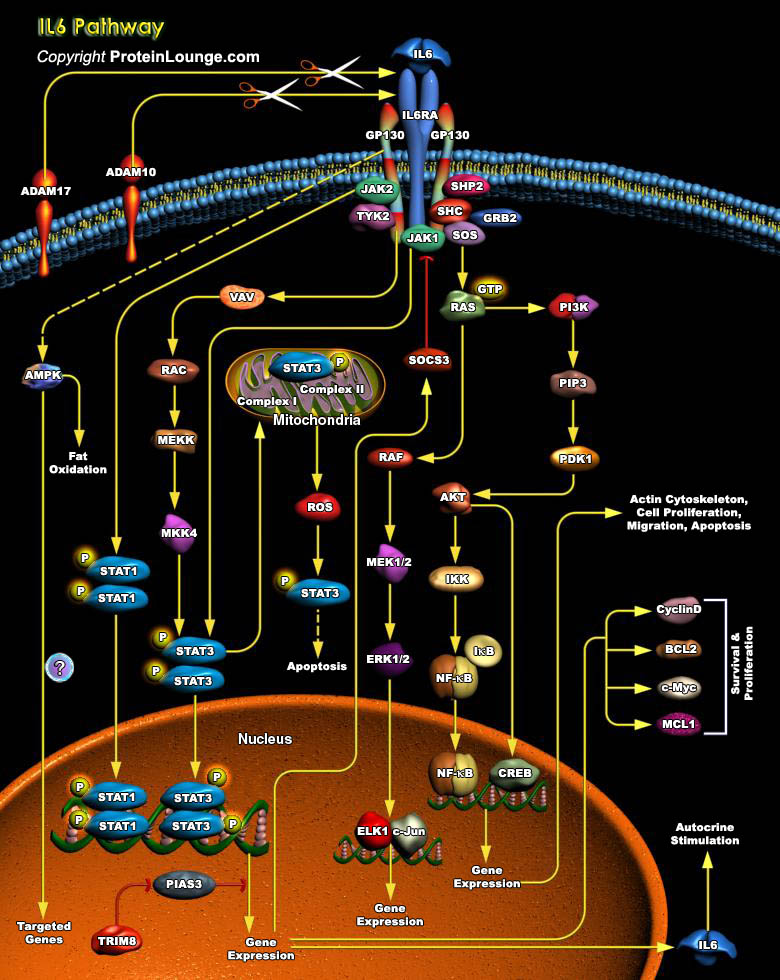
IL6 (Interleukin-6) is a pleiotropic cytokine that not only affects the immune system, but also acts in other biological systems and many physiological events in various organs including the inflammation, hematopoiesis, and oncogenesis by regulating cell growth, gene activation, proliferation, survival, and differentiation. This protein signals through a receptor composed of two different subunits, an alpha subunit that produces ligand specificity and GP (Glycoprotein) 130, a receptor subunit shared in common with other cytokines in the IL-6 family. Binding of IL6 to its receptor initiates cellular events including activation of JAK (Janus Kinase) kinases and activation of RAS-mediated signaling. Activated JAK kinases phosphorylate and activate STAT transcription[..]
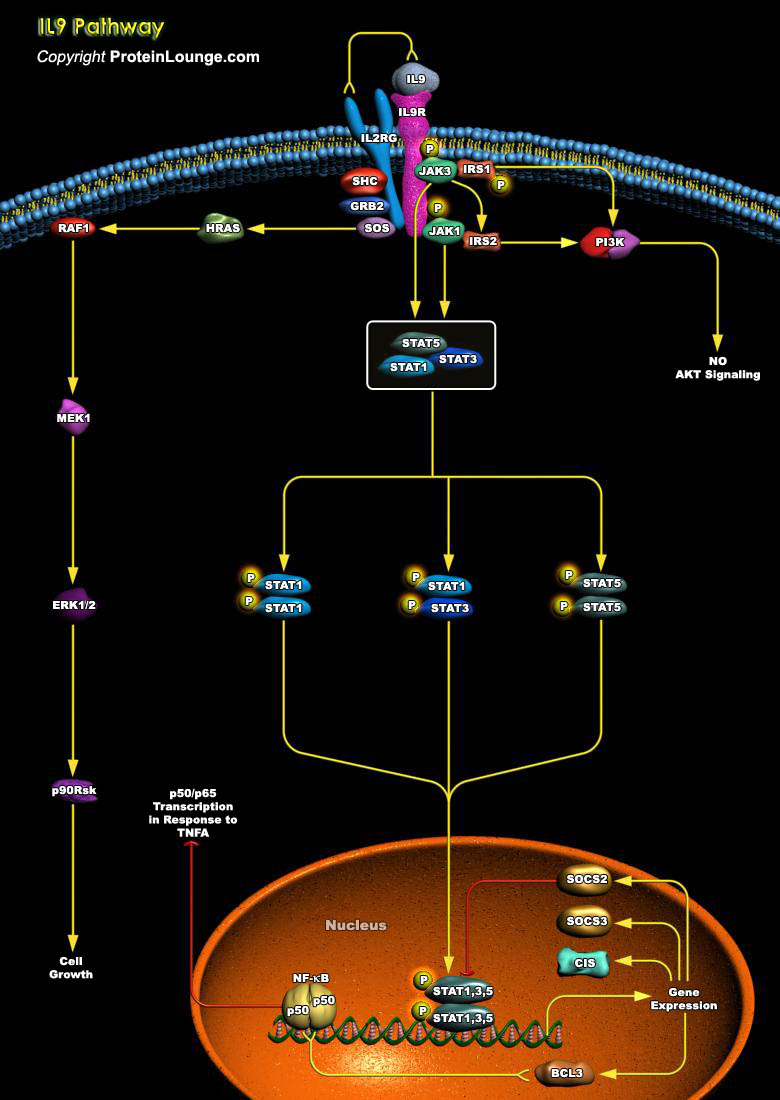
IL9 (Interleukin-9) is a pleiotropic cytokine secreted by activated T cells, mainly TH2 and TH9. Other cells like mast cells, Treg cells and TH17, innate lymphoid cells, NKT cells, and dendritic cells can also secrete IL9. IL9 generally play an important role in immune response, its major target include T-cell clones, hematopoietic progenitors, mast cells, B lymphocytes and immature neuronal cell lines. In addition, it may be involved in tumorigenesis (Ref.1). IL9 is a member of the four-helix cytokine family that signals through the the two chain IL9 receptor that include the IL9RA (IL9–specific alpha chain) and the common gamma chain, that is shared by IL-2, IL-4, IL-7, IL-15 and IL-21 receptors. IL9R is expressed in membrane-bound and soluble[..]
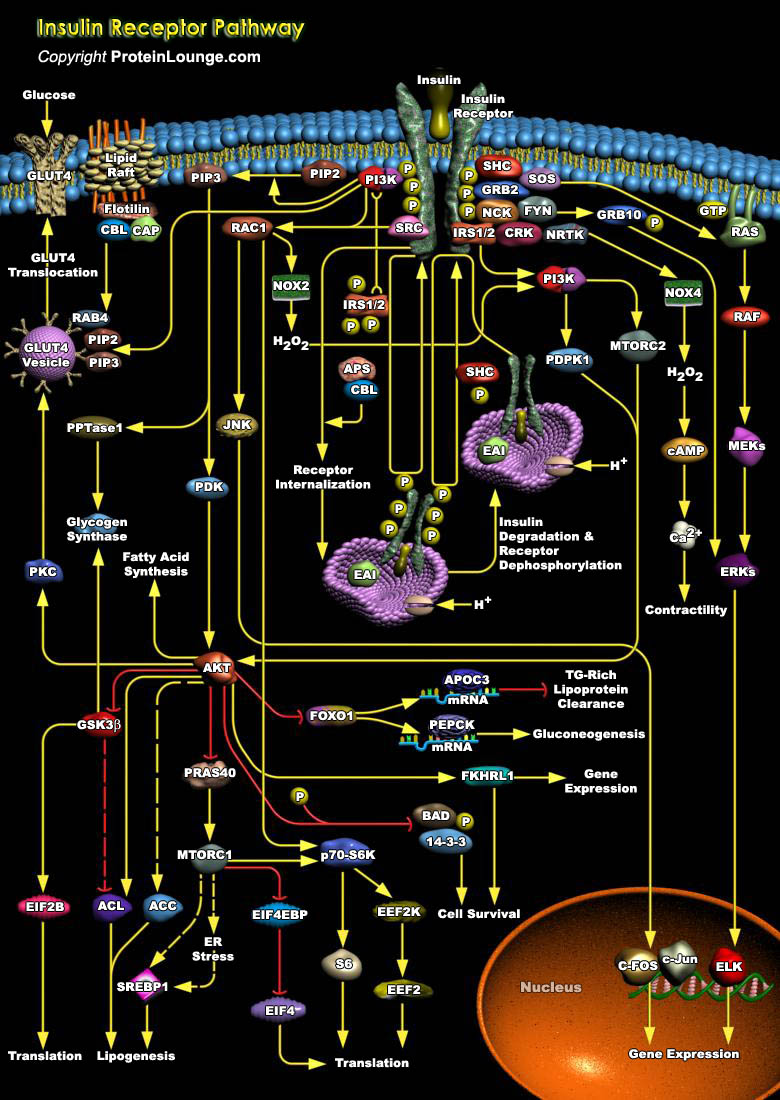
Insulin is the major hormone controlling critical energy functions such as glucose and lipid metabolism. Insulin elicits a diverse array of biological responses by binding to its specific receptor. The insulin receptor belongs to a subfamily of receptor tyrosine kinases that includes the IGF (Insulin-like Growth Factor) receptor and the IRR (Insulin Receptor-Related Receptor). These receptors are tetrameric proteins consisting of two alpha and two beta subunits that function as allosteric enzymes in which the alpha subunit inhibits the tyrosine kinase activity of the beta subunit. Insulin has diverse effects on cells including stimulation of glucose transport, gene expression and alterations of cell morphology. The hormone mediates these effects by activation of[..]
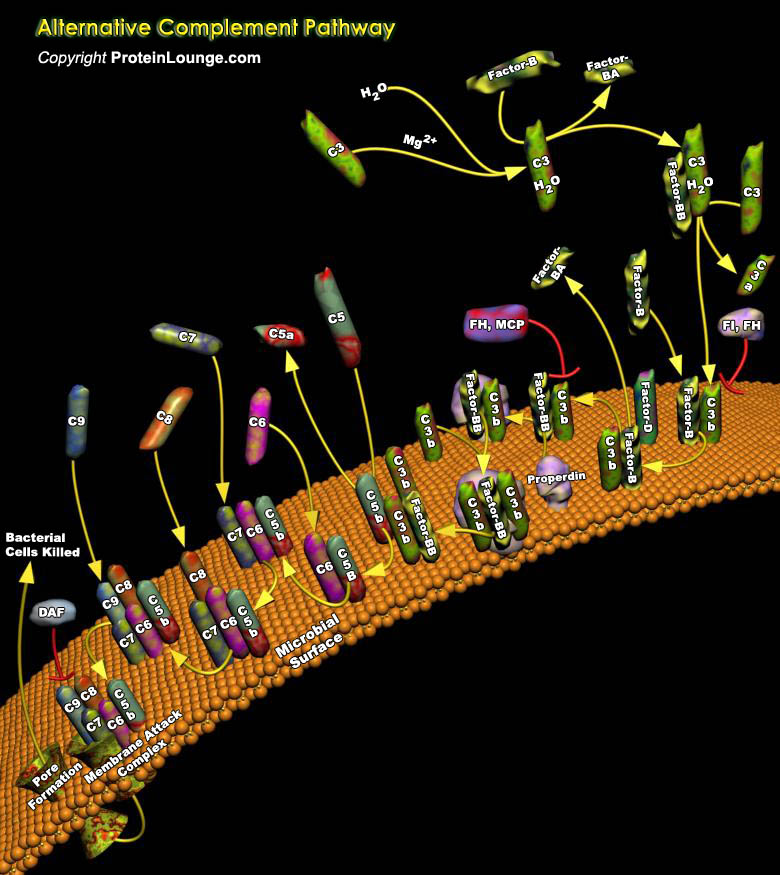
The complement system refers to a series of proteins circulating in the blood and bathing the fluids surrounding tissues. The proteins circulate in an inactive form, but in response to the recognition of molecular components of microorganism, they become sequentially activated, working in a cascade where in the binding of one protein promotes the binding of the next protein in the cascade. There are 3 complement pathways that make up the complement system: the classical complement pathway, the lectin pathway, and the alternative complement pathway. The pathways differ in the manner in which they are activated and ultimately produce a key enzyme called C3 convertase .The alternative complement pathway constitutes the humoral component of natural defence against[..]
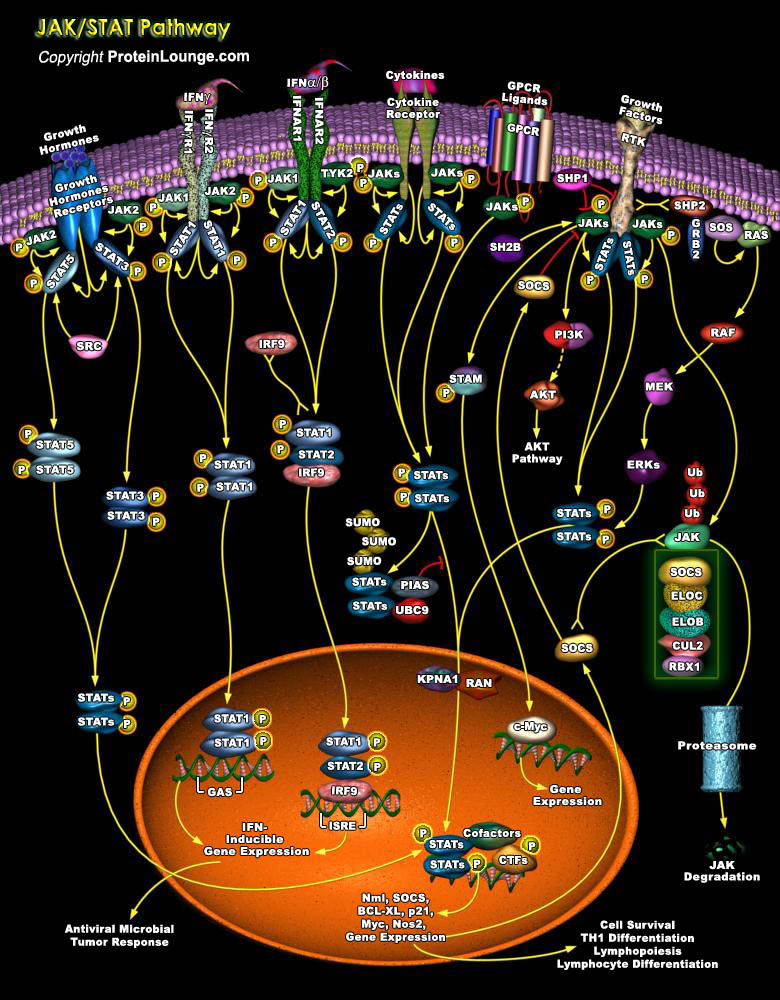
Signaling pathways mediating the transduction of information between cells are essential for development, cellular differentiation and homeostasis. Their dysregulation is also frequently associated with human malignancies. The JAK (Janus tyrosine Kinase)-STAT (Signal Transducer and Activator of Transcription) pathway represents one such signaling cascade whose evolutionarily conserved roles include cell proliferation and haematopoiesis. JAK belongs to a family of non-receptor protein tyrosine kinases of approximately 130 kDa, comprising of JAK1, JAK2, JAK3 and TYK2 (non-receptor Protein Tyrosine Kinase-2). STATs are latent cytoplasmic transcription factors that become activated after recruitment to an activated receptor complex. Seven STAT proteins have been[..]
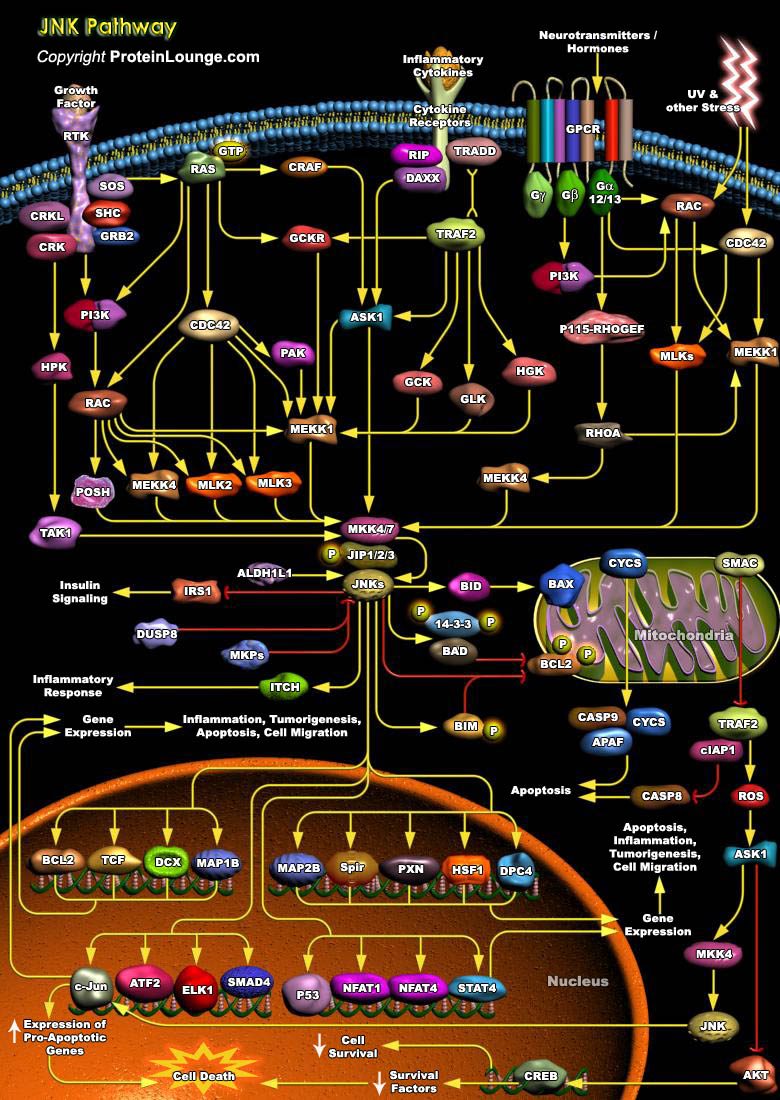
MAPKs (Mitogen-Activated Protein Kinases) are Serine-threonine protein Kinases that are activated in response to a variety of extracellular stimuli and mediate signal transduction from the cell surface to the nucleus. MAPKs are expressed in multiple cell types including Cardiomyocytes, Vascular Endothelial cells, and Vascular Smooth Muscle Cells. Three major MAPKs include ERKs (Extracellular signal-Regulated Kinases), JNKs (c-Jun NH(2)-terminal protein Kinases), and p38 Kinases. Members of the JNK/SAPK (Stress-Activated Protein Kinase) family of MAPKs are strongly stimulated by numerous Environmental Stresses, but also more modestly stimulated by Mitogens, Inflammatory Cytokines, Oncogenes, and inducers of Cell differentiation and morphogenesis. Ten mammalian JNK[..]

A number of inherited (constitutional/genetic) disorders are characterized by BM (Bone Marrow) failure usually in association with one or more somatic abnormality. The BM failure may involve all or a single lineage; in some cases it may be initially associated with a single peripheral cytopenia and then progress to pancytopenia. Scientifically, they constitute an exciting group of disorders and the two syndromes that are frequently associated with generalized BM failure? are FA (Fanconi’sAnemia, named for Swiss pediatrician, Guido Fanconi) and DC (DyskeratosisCongenita) (Ref.1). FA is a rare autosomal recessive chromosome instability disorder clinically characterized by developmental defects, progressive BM failure, progressive AA (Aplastic Anemia), diverse[..]
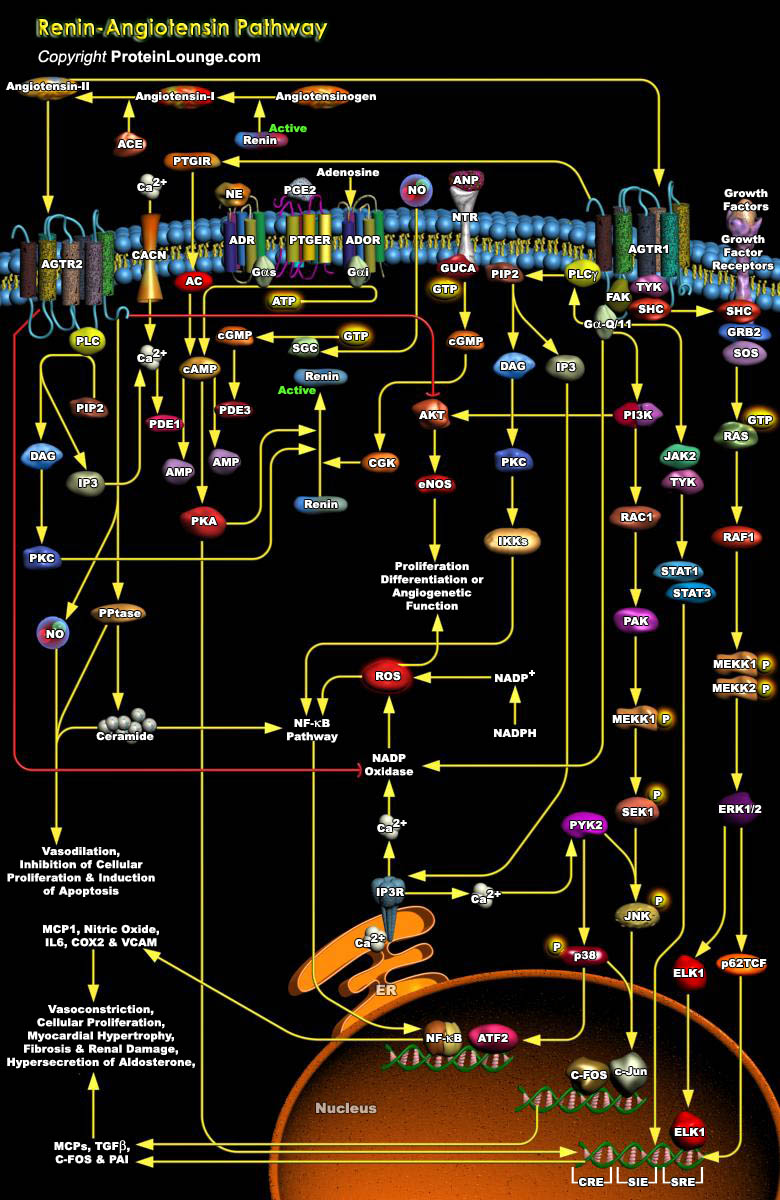
Proliferation and migration of VSMCs (Vascular Smooth Muscle Cells) in arteries plays an important role in the pathophysiology of atherosclerosis, hypertension, and restenosis after angioplasty. A wide variety of growth factors, cytokines, and hormones activate these responses in blood vessels. A prominent growth factor for VSMCs is Angiotensin (Angiotensin-I and II), the main peptide of the Renin Angiotensin System. Renin is an aspartyl protease that catalyzes the first step in the activation of the RAS. Active renin specifically cleaves the 10 amino acids from the N-terminus of Agt to form Ang I. In humans, there is an excess of Agt in serum. Likewise, ACE is ubiquitous in the endothelium and plasma.The primary source of renin in the circulation is the kidney, where[..]
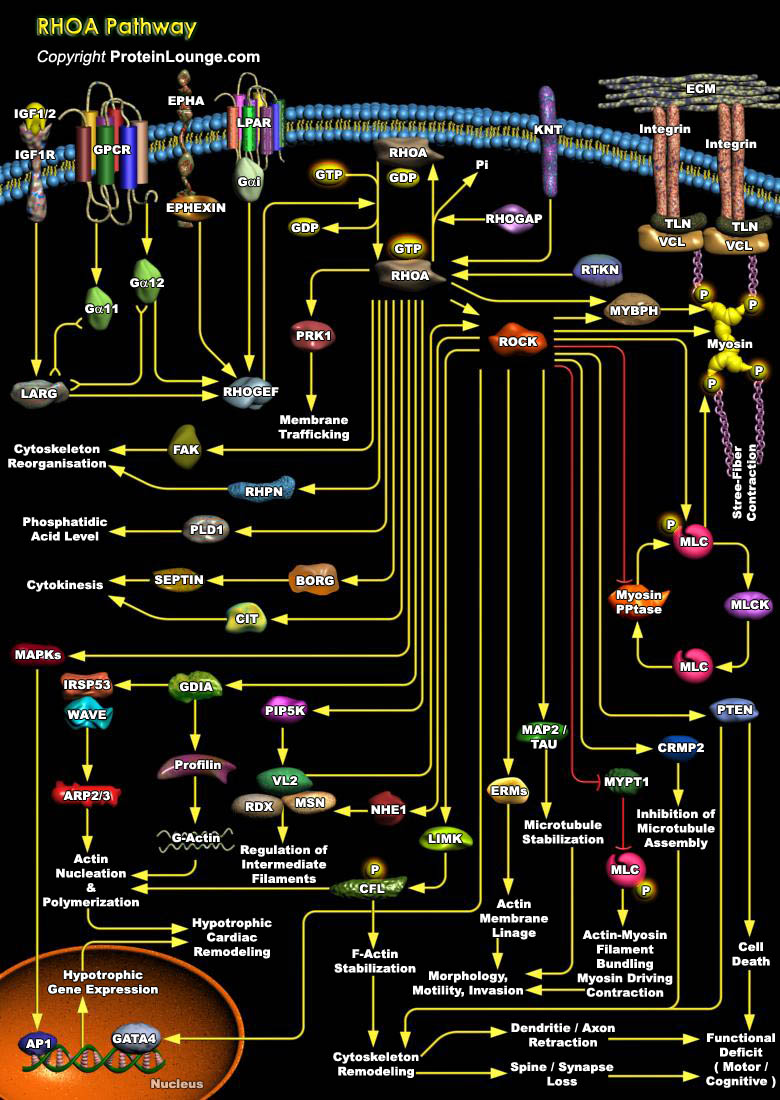
Rho is a member of the Ras superfamily of small GTP-binding proteins that play a central role in diverse biological processes such as Actin cytoskeleton organization, Microtubule dynamics, Gene transcription, Oncogenic transformation, Cell cycle progression, Adhesion and Epithelial wound repair. To date, 20 genes encoding different members of the Rho family have been identified in the human genome, and each one acts as a molecular switch to control distinct biochemical pathways. The mammalian Rho GTPase family currently consists of three subfamilies, Rho (RhoA, RhoB and RhoC), Rac (Rac1, Rac2 and Rac3) and CDC42 (Cell Division Cycle-42) (CDC42Hs and G25K). Rho proteins cycle between an active GTP-bound state and an inactive GDP-bound state. Their activation state is[..]
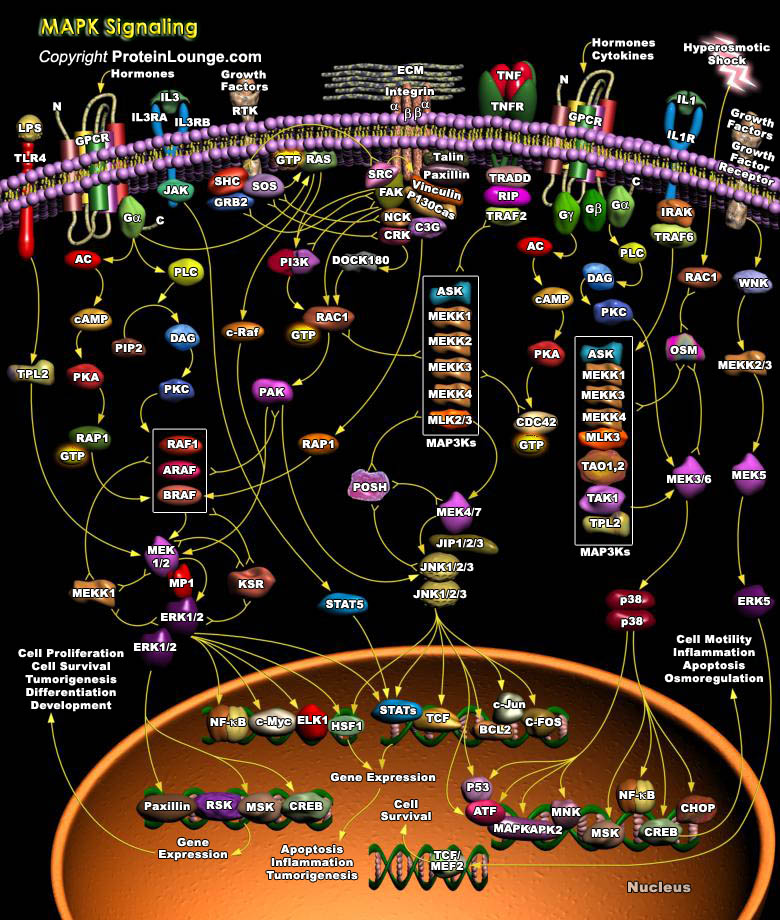
MAPKs are a group of protein Serine/threonine Kinases that are activated in response to a variety of extracellular stimuli and mediate signal transduction from the cell surface to the nucleus. In combination with several other signaling pathways, they can differentially alter phosphorylation status of numerous proteins, including Transcription Factors, Cytoskeletal proteins, Kinases and other Enzymes, and greatly influence Gene Expression, Metabolism, Cell Division, Cell Morphology and Cell Survival. Furthermore, epigenetic aberrations of these enzymes or of the signaling cascades that regulate them have been implicated in a variety of human diseases including Cancer, Inflammation and Cardiovascular disease. There are four major groups of MAPKs in mammalian[..]

mTOR (Mammalian Target of Rapamycin) is a 289-kDa serine/threonine protein kinase and a member of the PIKK (Phosphatidylinositol 3-Kinase-related Kinase) family. The protein consists of a Catalytic Kinase domain, an FRB (FKBP12–Rapamycin Binding) domain, a putative Auto-inhibitory domain (Repressor domain) near the C-terminus and up to 20 tandemly repeated HEAT motifs at the Amino terminus, as well as FAT (FRAP-ATM-TRRAP) and FATC (FAT C-terminus) domains. The C-terminus of TOR is highly homologous to the catalytic domain of PI3K (Phosphatidylinositol 3-Kinase). mTOR proteins are evolutionarily conserved from yeast to human in the C-domain, with human, mouse, and rat mTOR proteins sharing 95% identity at the amino acid level. The human mTOR gene encodes a protein[..]
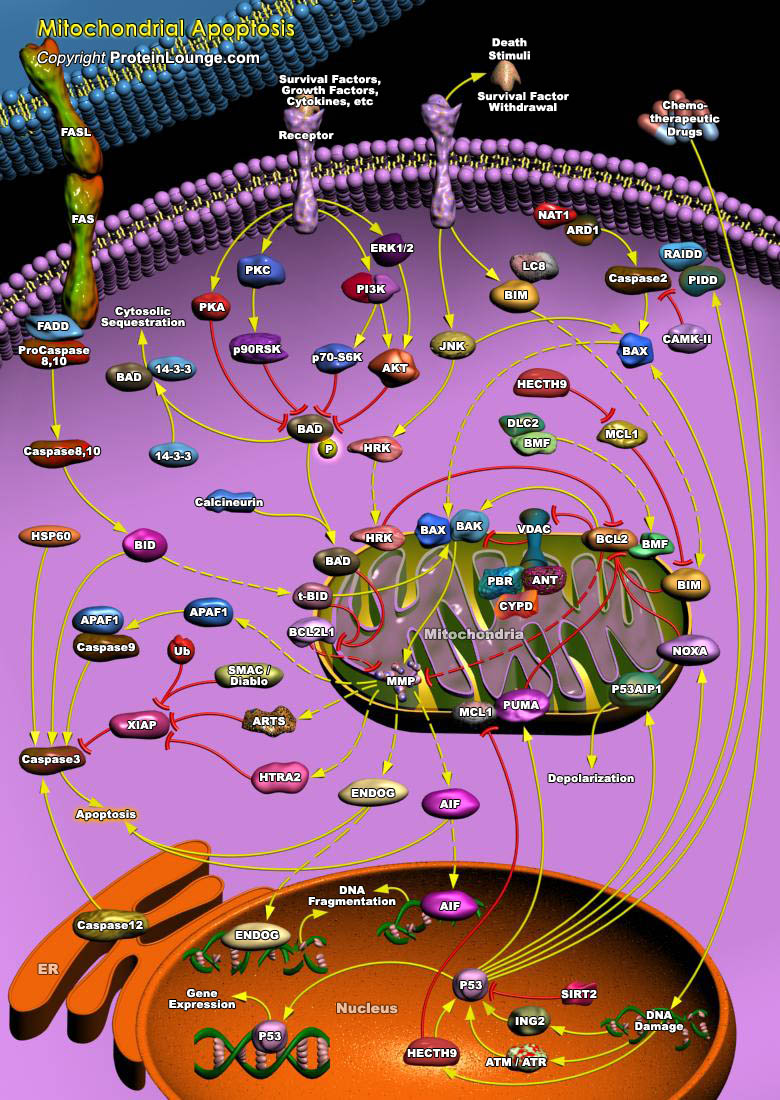
Apoptosis is a naturally occurring process by which a cell is directed to Programmed Cell Death. Apoptosis is based on a genetic program that is an indispensable part of the development and function of an organism. In this process, cells that are no longer needed or that will be detrimental to an organism or tissue are disposed of in a neat and orderly manner; this prevents the development of an inflammatory response, which is often associated with Necrotic cell death. There are at least two broad pathways that lead to Apoptosis, an "Extrinsic" and an "Intrinsic" Pathway. In both pathways, signaling results in the activation of a family of Cys (Cysteine) Proteases, named Caspases that act in a proteolytic cascade to dismantle and remove the dying cell. The extrinsic[..]

